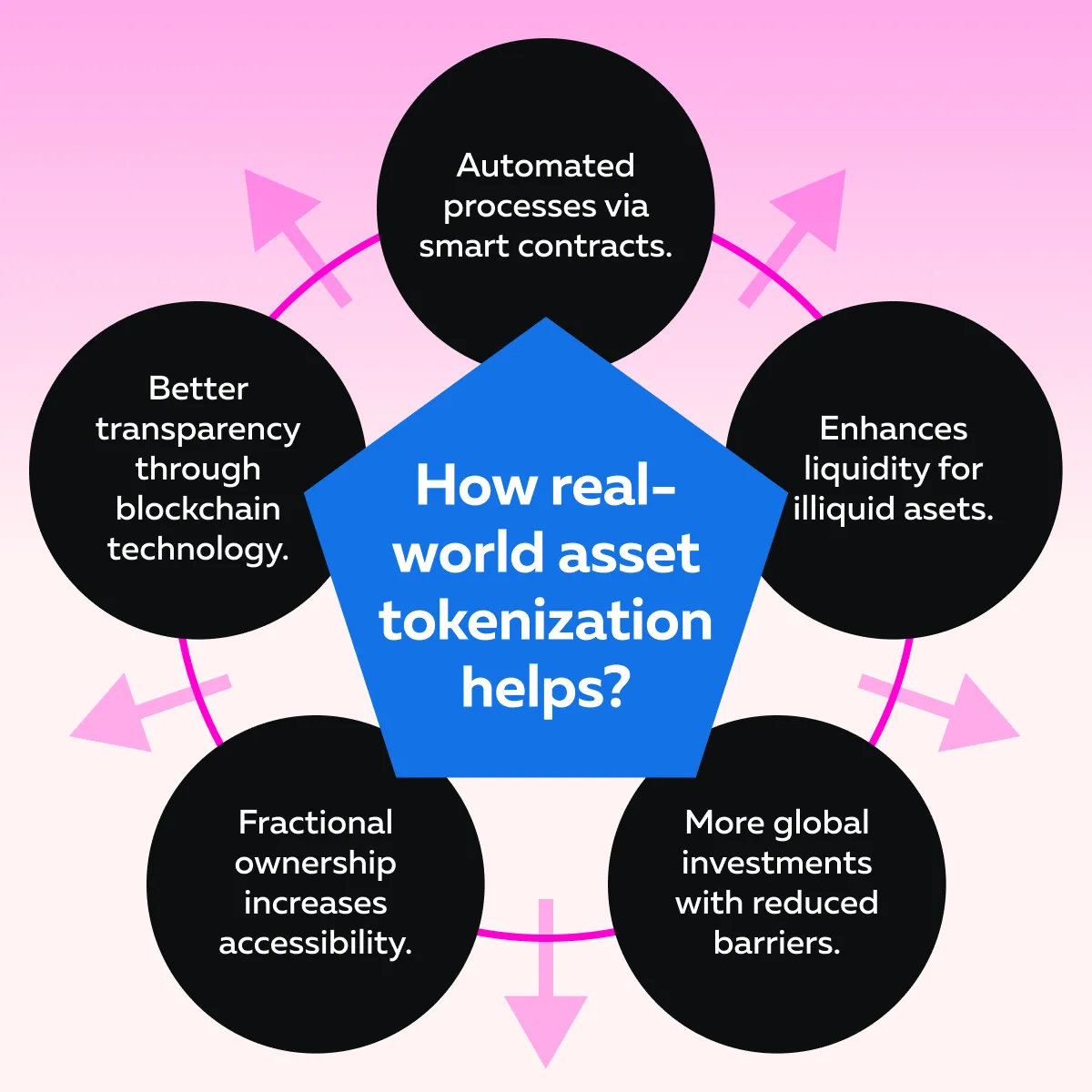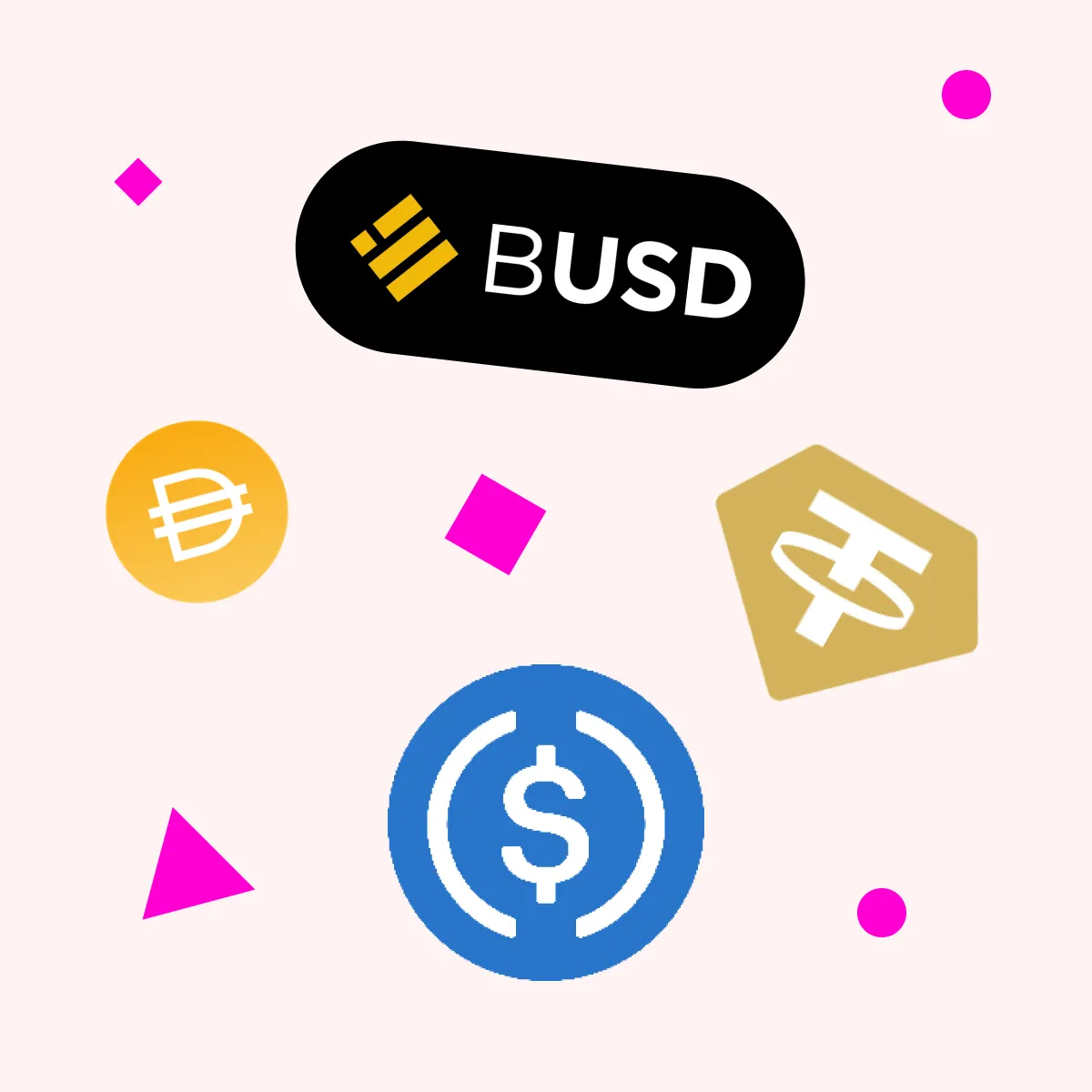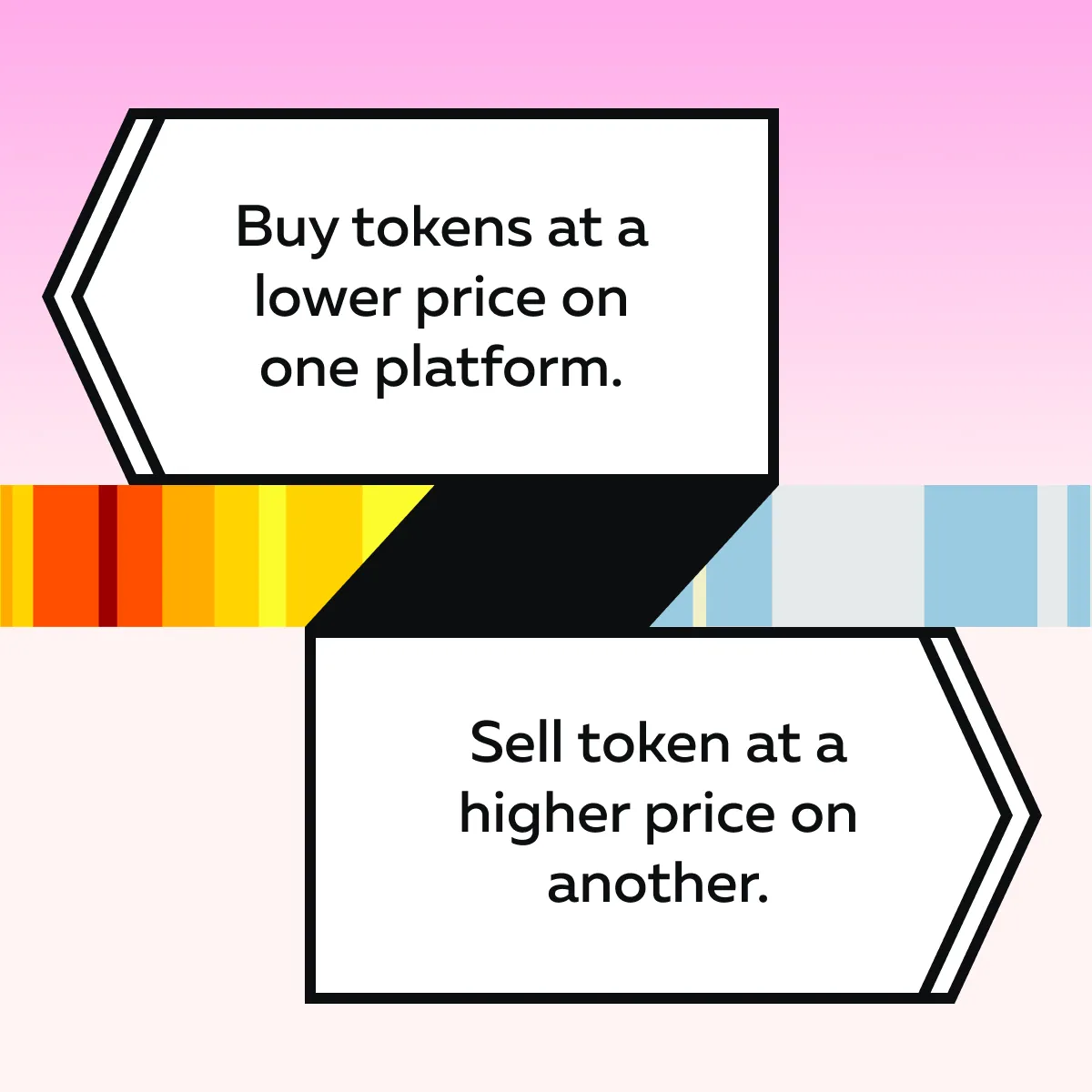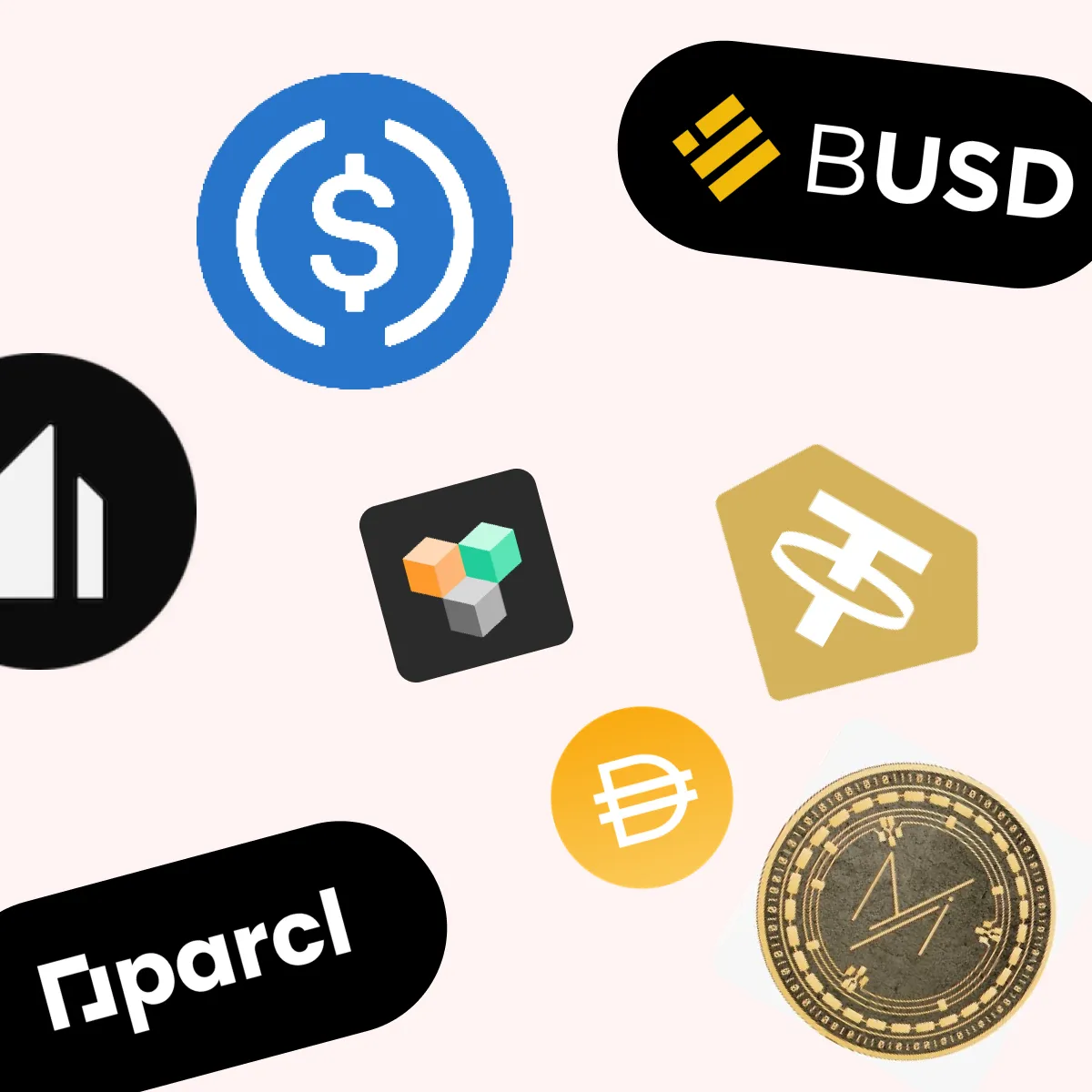

December Trading
Deals Are Live!
Save on Global+, data access,
and add-ons.
See All December Deals

Black Friday
Nov 28-Dec 31
0 days : 22 hours
50% OFF Global+ Quarterly
+ 50% OFF Data (3 months)

Cyber Monday
Dec 1 - Dec 31
0 days : 22 hours
60% OFF Global+ Monthly
+ Data (1 month)

Add-on Deals
Dec 1 - Dec 31
0 days : 22 hours
50% OFF
Add-ons

New Year Sale
Dec 26 - Jan 1
1 days : 22 hours
30% OFF Global+ Lifetime
*Data not included
Crypto
January 27, 2025
SHARE
The Rise of Tokenized Assets in 2025: Opportunities for Traders
Do you like a property but don’t have the funds to buy it all? Or do you want to buy a gold bar but again money is the issue? What if you could own a slice of a skyscraper or a bar of gold? Yes, this is possible due to the concept of “tokenized assets.” It is a financial innovation that’s changing how we invest in real-world assets.
Curious? In this article, we’ll learn about tokenized assets in 2025. Please note that this concept has opened the doors to investing for more people. Now, it has made it possible to own fractions of luxury properties or rare commodities with minimal capital.
Further, we’ll explore the benefits of real-world asset tokenization and see some of its risks. You’ll also learn about exciting trading opportunities, like fractional ownership and yield-generating tokens. Next, you will understand how our advanced market analysis tool, Bookmap, can help you trade in this market confidently. Let’s begin.
What Are Tokenized Assets?
Tokenized assets are digital tokens. They represent fractional ownership. These tokens are created using blockchain technology. Due to this technology, these tokens are highly secure. By breaking down high-value assets into smaller and tradable units, tokenization democratizes access to markets. Previously, such market access was traditionally limited to high-net-worth individuals or institutional investors. Now, let’s have a look at the different types of tokenized assets:
| Real Estate | Commodities | Traditional Securities |
|
|
|

The Important Role of Blockchain
Trading of tokenized assets has become possible because of blockchain technology. Through it, every transaction is recorded on an immutable ledger. Such a recording process ensures trust among investors. Additionally, dividend distributions or asset transfers are automated by smart contracts. This further reduces the need for intermediaries.
Let’s understand better through an example related to tokenized real estate investment:
- Say you want to invest in a $10 million commercial property.
- But you don’t have millions to spare.
- Now, with tokenized real estate, the property is divided into digital tokens.
- Each token represents a fraction of ownership.
- Assume that the property is split into 100,000 tokens.
- Here, you could buy one for $100.
- By holding these tokens, you become a partial owner.
- You earn a share of the property’s rental income or appreciation over time.
Through this model, small investors get to trade in tokenized assets that were previously out of reach. Monitor market trends in real-time with Bookmap and take advantage of tokenized trading opportunities.
Why Are Tokenized Assets Gaining Traction in 2025?
Tokenized assets offer solutions to several challenges faced in traditional investing. See the graphic below to learn about the various benefits of real-world asset tokenization:

Let’s gain more clarity and see the key reasons behind this growing trend:
Growth Reason I: Accessibility
One of the most significant benefits of tokenized assets in 2025 is their ability to lower barriers to entry. Traditional investments often require substantial capital. This requirement limits access for smaller retail investors. However, tokenization breaks down high-value assets into smaller and fractional units. This allows anyone to participate with minimal investment.
For Example:
- In the case of blockchain-tokenized commodities, a retail investor no longer needs to buy a full ounce of gold, which might cost $2,000.
- Instead, they can invest as little as $100 in a token representing a fractional share of that gold.
- Similarly, tokenized real estate enables investors to purchase fractions of high-value properties.
- This democratizes access to lucrative real estate markets.
Growth Reason II: Global Reach
Tokenized assets simplify cross-border transactions. Through blockchain technology, they eliminate the need for intermediaries like banks or brokers. This reduces costs and speeds up transactions.
For example:
- Say an investor in Asia can buy tokenized real estate in the United States.
- Alternatively, they can go after blockchain-tokenized commodities like crude oil from the Middle East.
- There would be no need for complex and costly international processes.
Growth Reason III: Market Liquidity
Many traditional asset classes, such as real estate or fine art, are inherently illiquid. This means they cannot be easily bought or sold. Tokenization addresses this challenge by introducing liquidity. It enables these assets to be traded on blockchain platforms 24/7. This ability to buy and sell fractional shares of assets creates a more liquid market.
For Example:
- Consider a large commercial property that could take months to sell through traditional methods.
- With the technique of tokenization, it can be divided into tokens.
- These tokens can be bought and sold instantly on blockchain-based marketplaces.
- This offers both investors and property owners a more liquid market.
Growth Reason IV: Institutional Adoption
It has been observed that more and more institutional investors are investing in tokenized real estate and blockchain-tokenized commodities. As a result, financial firms are launching tokenized funds or platforms to cater to the rising demand.
If we talk about the reasons for this interest, most institutions are particularly drawn to the transparency and security provided by blockchain technology.
For Example:
- Tokenized carbon credits are rapidly gaining popularity.
- For those unfamiliar, these credits are a part of ESG (Environmental, Social, and Governance) investment strategies.
- These tokenized credits make it easier for companies and investors to trade carbon offsets.
- The trading is highly transparent.
- Mostly, it aligns with global sustainability goals.
Trading Tokenized Assets: Opportunities for 2025

Tokenized assets in 2025 present exciting trading opportunities for retail and institutional investors. These digital tokens offer new ways to participate in markets. Let’s have a look at the key opportunities:
Opportunity I: Low-Capital Entry

Real-world asset tokenization makes fractional ownership possible. Traders no longer need significant capital. They can purchase tokens to invest in traditionally expensive asset classes like real estate or commodities. This even makes it easier to diversify portfolios across various asset types.
For Example:
- Imagine a trader with a limited budget.
- They can buy fractions of tokenized real estate, such as:
- A luxury apartment building,
or
- Invest in blockchain-tokenized commodities like oil or gold.
- This accessibility allows for better risk management.
- Additionally, traders can expand portfolios without requiring a large upfront investment.
Leverage Bookmap’s heatmaps to spot liquidity zones in tokenized asset markets.
Opportunity II: Market Volatility

Using blockchain-tokenized commodities, traders can capitalize on market volatility. Be aware that commodities like gold, oil, or agricultural products often experience price swings. This majorly happens due to:
- Geopolitical events,
- Economic changes, and
- Natural factors.
For example:
- Say a trader is monitoring global crude oil trends.
- They buy blockchain-tokenized commodities when prices dip and sell when prices rebound.
- This price movement is tied to real-world events.
In this way, the fluctuating value of tokenized assets in 2025 provide profitable short-term trading opportunities.
Opportunity III: Arbitrage Across Platforms
Tokenized assets are traded on multiple blockchain platforms. This leads to price discrepancies for the same asset. Now, savvy traders can exploit these differences through arbitrage. See the graphic below to learn how:

For Example:
- Say a tokenized gold token is trading for:
- $1,800 on one blockchain marketplace,
and
- $1,820 on another.
- Now, traders can take advantage of this price gap.
- They can execute rapid transactions to earn profits.

Opportunity IV: Yield-Generating Tokens
Another opportunity in tokenized assets in 2025 is the rise of yield-generating tokens. These assets not only provide fractional ownership but also offer ongoing returns. Let’s understand through two examples:
| Example I: Tokenized Real Estate | Example II: Blockchain Tokenized Commodities |
|
|
Risks and Challenges of Trading Tokenized Assets
Tokenized assets in 2025 open up numerous opportunities. However, trading them also involves specific risks and challenges. Let’s check out the various factors that investors and traders must be aware of:
Risk I: Legal and Regulatory Risks
The legal framework for real-world asset tokenization varies significantly across jurisdictions. Different countries have distinct regulations regarding the following:
- Issuance,
- Trading, and
- Taxation of tokenized assets.
These inconsistencies create compliance risks, especially for traders operating across multiple regions.
For Example:
- Say a trader buys tokenized real estate tokens on a platform based in one country.
- Later, they discover that regulations in their home country restrict or prohibit such investments.
- This lack of regulatory clarity leads to penalties and frozen assets.
Risk II: Liquidity Risks
Tokenization enhances market liquidity. However, not all platforms achieve this equally. Some marketplaces have lower trading volumes. This makes it difficult to execute trades at favorable prices. This illiquidity is particularly problematic for large trades as finding buyers or sellers becomes challenging.
For Example:
- Say a trader is looking to sell a significant stake in tokenized real estate.
- They may face delays or be forced to sell at a discount if there’s insufficient demand on the platform.
Risk III: Security Risks
The concept of tokenization is based on blockchain technology. Such a heavy reliance leads to security risks such as:
- Platform hacks
or
- Smart contract failures.
Even though blockchain is known for its transparency and security, vulnerabilities can still arise. These deficiencies are possible in the coding or infrastructure of trading platforms.
For Example:
- Say a blockchain-tokenized commodities platform falls victim to a hacking incident.
- This leads to a loss of funds or halted trading.
- Similarly, assume there is a bug in the smart contract governing tokenized real estate transactions.
- This could lock traders out of their investments.
Risk IV: Volatility Risks
Tokenized assets inherit price volatility. This comes from both the:
- Underlying asset
and
- Blockchain market.
For example, the value of a blockchain-tokenized commodity like gold fluctuates with global supply and demand trends. At the same time, the token itself gets affected by swings in cryptocurrency markets. This dual-layer volatility increases the risk for traders.
In another example, a tokenized real estate token may experience stable rental yields. However, its price could still drop due to broader market sell-offs in the blockchain ecosystem.
Conclusion
Tokenized assets in 2025 have immense potential. They democratize investing by breaking down high-value assets like real estate, commodities, and securities into smaller and tradable fractions. Such a real-world asset tokenization allows more people to participate in markets that were once out of reach.
However, traders need to approach these opportunities with the right tools and knowledge. Our advanced market analysis tool, Bookmap, can help you here by providing real-time insights into:
- Price movements,
- Liquidity levels, and
- Trading patterns.
Using Bookmap, you can easily spot opportunities in tokenized assets and avoid common issues like illiquidity or price volatility. Stay ahead in emerging markets by tracking tokenized asset liquidity with Bookmap’s advanced tools.
